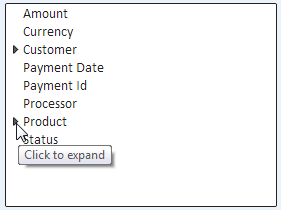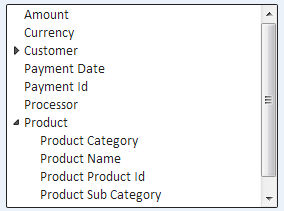Difference between revisions of "Using Multiple Tables in a View"
Gadiyedwab (talk | contribs) |
Gadiyedwab (talk | contribs) |
||
| Line 9: | Line 9: | ||
In the view fields dialog, you use a field list to select fields for your view. If a field is a reference field, you'll see a small right-pointing triangle ( ▶ ) next to the field name. This field points to a related table and if you click on the triangle, you'll expand the field list to show all the fields from the related table. | In the view fields dialog, you use a field list to select fields for your view. If a field is a reference field, you'll see a small right-pointing triangle ( ▶ ) next to the field name. This field points to a related table and if you click on the triangle, you'll expand the field list to show all the fields from the related table. | ||
| + | The following image shows the list of fields before expanding "Product" | ||
| + | |||
| + | [[File:field_list1.png]] | ||
| + | |||
| + | The following image shows the same list after expanding "Product" | ||
| + | |||
| + | [[File:field_list2.png]] | ||
{{Template:TOC|View Editor|Exporting View Data}} | {{Template:TOC|View Editor|Exporting View Data}} | ||
Revision as of 13:11, 9 January 2014
Introduction
Explore Analytics makes it easy to combine data from multiple tables in a view. You start your view based on a table, and then add fields from related tables to your view. Explore Analytics takes care of all the rest.
The ability to add fields from related tables relies on the definition of reference fields.
Selecting Fields of Related Tables
In the view fields dialog, you use a field list to select fields for your view. If a field is a reference field, you'll see a small right-pointing triangle ( ▶ ) next to the field name. This field points to a related table and if you click on the triangle, you'll expand the field list to show all the fields from the related table.
The following image shows the list of fields before expanding "Product"
The following image shows the same list after expanding "Product"

